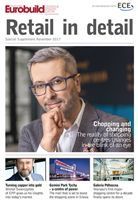Aneta Cichla, ‘Eurobuild CEE’: How would you describe the retail portfolio managed by EPP?
Michał Świerczyński, board member and head of asset management, EPP: EPP is quite a young company on the market, but with well known and established shopping centres – and moreover with a very experienced team who have been employed on the retail market for many years, and gained their experience in both Polish and international development and management companies.
And what is the company’s approach in terms of running its retail business?
We mostly focus on making our shopping centres the best environment for the retail business of our clients, i.e. the tenants, regardless of the business line they represent. We have to be sure in every way that our centres represent the ideal place for retailing, as well as services and entertainment. Our clients are the tenants, whereas the customers who come to shopping centres are the clients of our clients. Our knowle































































